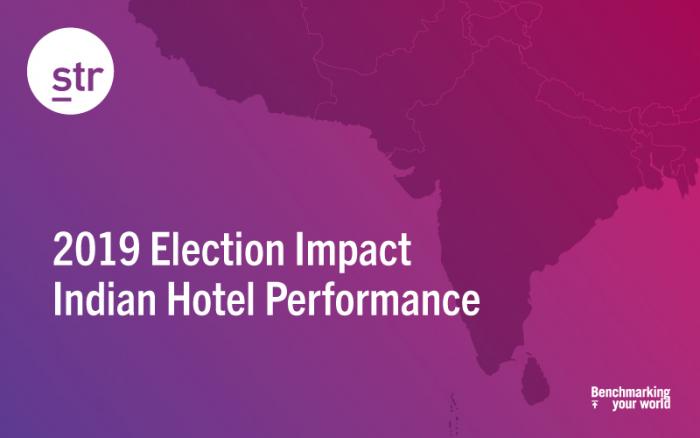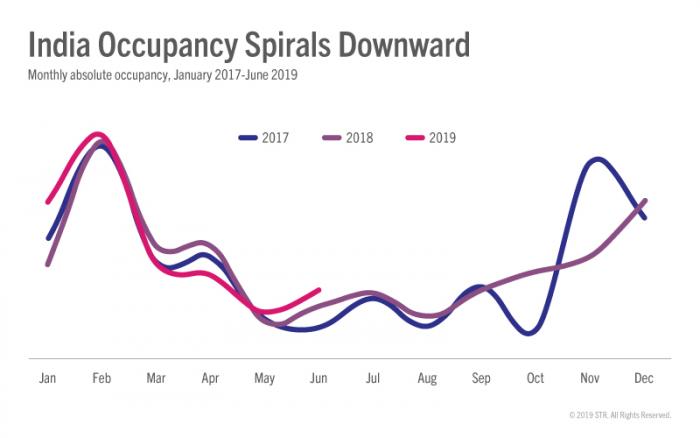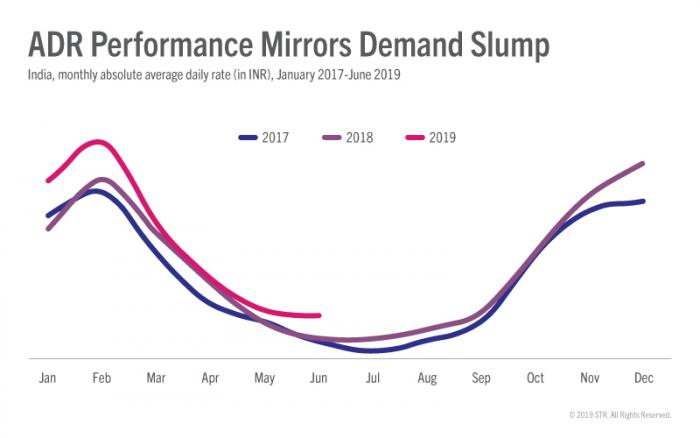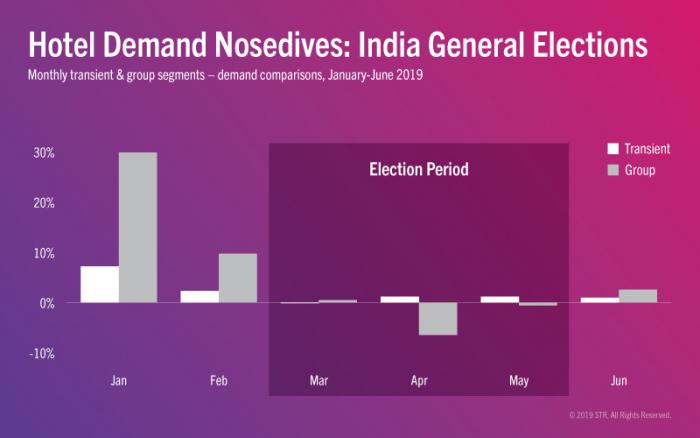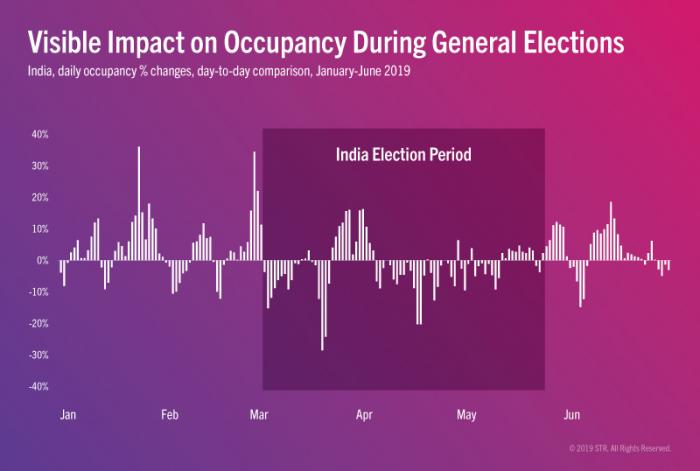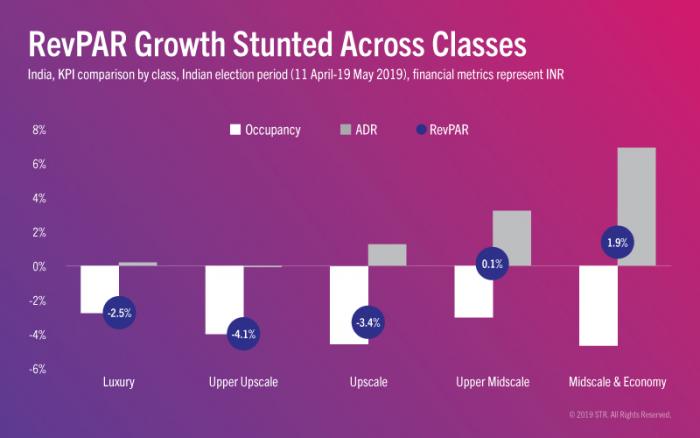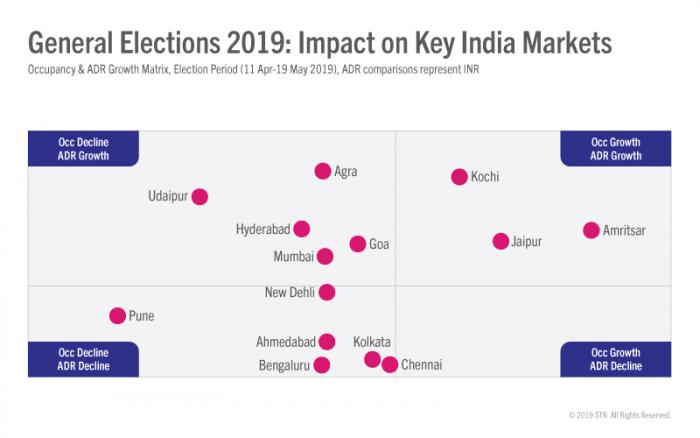Following strong performance in Q1 2019, India recorded a marginal occupancy decline (-0.1% to 63.1%) during the second quarter of the year. Average daily rate (ADR), however, grew 1.8% to INR5,508.80. This drove growth in revenue per available room (RevPAR), albeit at its lowest level for a Q2 period since 2014, rising 1.7% to INR3,478.76.
Slowing Q2 occupancy performance could be attributed to a number of factors, including the impact of the April-May 2019 general election in India. During the April election phase, India hotel demand declined 0.4% year-over-year, while RevPAR fell to INR3,680.11 (-2.9%).
